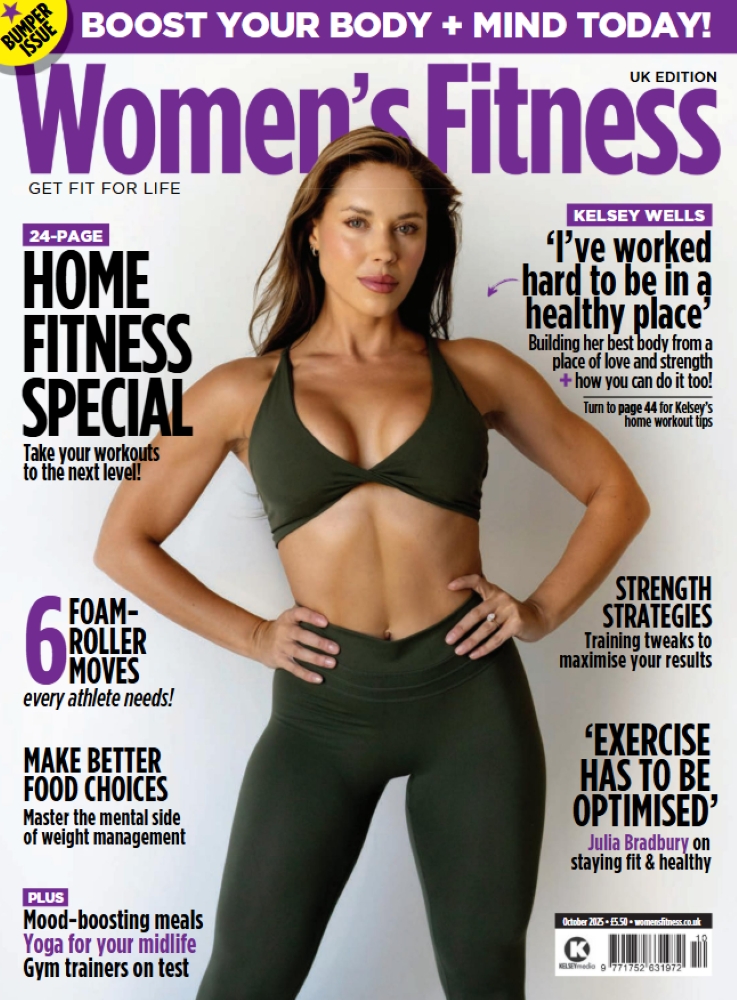Before you start an expensive new Instagram fad, get back to the basics of fitness and find out what really works, with these golden rules of fitness from personal trainer Will Duru.
Every year, a wave of new exercise trends floods the fitness landscape, each promising the ultimate solution for weight loss and building muscle. But, amid the flashy trends and quick fixes, personal trainers have relied on the same principles and rules of fitness to get people into shape for years: effective cardio mixed with regular strength training, increased activity and, of course, a healthy diet.
If you’re looking to get more from your workouts, leading personal trainer Will Duru explains the rules of fitness and how to pare it down to what works – minus the fads.
1. Accept there are no shortcuts
In the ever-evolving world of fitness, you get fads and you get enduring principles. As a personal trainer, people come to me every year wanting to lose weight and build muscle, and, for that, the principles are the same. There are no real secrets and no shortcuts, only what science and time have shown to work over and over again.
2. Identify your goal…
…then find the right principles and stick to them. One of the first rules of fitness success is identifying your goal. Understanding your objective allows you to choose the exact training principles that have been proven to work to achieve it. For the purposes of this guide, let’s imagine your goal is to lose weight and build muscle.
3. Do Zone 2 training for weight loss
In order to lose excess weight, for example, you need to do cardio that keeps your heart rate between 120 and 150 beats a minute. This trains your body to utilise fats for energy instead of carbohydrates, making it an ideal zone for weight loss. If you’re just starting out, begin with two weekly 30-minute sessions and build up to three-to-four sessions of 45 minutes to an hour every week.
4. Get your steps up
In addition to your structured cardio, you will need to get yourself moving more in your everyday life. The best way to do this is to focus on increasing your step count to at least 10,000 steps a day, ideally 15,000.
5. Avoid just focusing on cardio – mix it up for success
While cardio is a crucial component of any fitness routine, you should be including 45 minutes of strength training two-to-three times a week, too. This can be weight lifting, working with resistance bands, or using your own bodyweight, but it’s crucial to be building muscle in your body.
After the age of 30, you lose three-to-eight per cent of your muscle mass per decade. Muscle is essential for burning fat, so the more you can build in your body, the more calories you burn at rest. That reaps benefits for your resting metabolism and means your body is burning energy outside the gym, too. This isn’t the case with cardio, which only burns calories while you’re doing it.
6. Do compound strength training
If you want to learnt the rules of fitness in strength training, opt for compound strength training – where you choose weightlifting moves that engage more than one muscle (ideally, as many as possible). Squats, deadlifts, bench presses and bent-over rows are all essential examples of compound moves that any weight-lifting programme should include, as they use multiple muscle groups simultaneously. That means you can get more muscles worked in a shorter amount of time. The result is more fat burning and the faster development of a lean, toned physique.
7. Keep going for at least four weeks
The rules of fitness show that consistency is the essential ingredient in any effective fitness regime, as it takes time and repeated efforts to really see results. You will have some days where you don’t manage it and others where you do, and it’s the sum of what you do the most that will count towards your result.
So, stick to any routine for four-to-eight weeks before considering any modifications. The initial phase will be about building your comfort in lifting weights and perfecting your technique. After this initial foundation is laid, you start progressive training, where you introduce incremental increases in weight and intensity every four weeks. Any effective fitness routine will keep challenging you to lift more weight, do more reps or progress in some way, as your body will quickly adapt until a programme becomes easy. That’s the time when you have to step it up.
8. Track your progress with photos
You need to measure your progress, and to do this effectively, you should utilise visual cues. Taking regular photos from the front, back and side in underwear, swimwear or tight training gear helps you track changes in your body composition over time. Also, hands-up side photos capture the progress of your obliques (the muscles at the side of your torso), so you get a full view of your fitness progress. Photos beat the scales because your weight may well go up as you gain muscle (muscle weighs twice as much as fat).
9. Notice your confidence increase
Beyond the physical transformations, you can also get motivated by the psychological impact of consistent training. Your increased confidence will be evident from better posture, more eye contact and a sense of increased overall self-assuredness – these are all tangible markers of progress that can keep you motivated.
10. Ignore Insta fads and keep going
It’s easy to get lured in by 10-minute workouts on social media. These don’t work. Abs, for example, are not sculpted through isolated ab workouts but through an integrated approach focused on lifestyle and body composition. Achieving significant change requires commitment and consistency to simple principles:
• more everyday movement
• zone two training two-to-four times a week
• strength training two-to-five times a week
• a healthy diet, high in protein and complex carbs and low in sugar and processed foods.
5 ways to eat to boost your focus

Top 5 foods for exercise
It’s vital to fuel your fitness regime with the right nutrients. Here, James Pugh, nutrition advisor at Viridian (viridian-nutrition.com), shares his diet checklist for sporting success.
Wholemeal carbohydrates should be incorporated into your diet when doing exercise, particularly
pre-exercise to boost glycogen stores and energy levels when exercising. For example, oats for breakfast would be a good option.
Protein consumption, particularly post-exercise, is crucial for muscle repair and growth. This will support injury prevention when participating in regular activity. Eggs and nuts are good options for this, as well as oily fish for fish-eaters, which will also act as an anti-inflammatory to aid recovery.
Fruits provide a wide variety of vitamins and minerals as they are very nutrient dense. Berries and bananas are good choices to eat before your workout to give you fast-release carbohydrates.
Leafy green vegetables, in particular spinach, are an essential part of everyone’s diet but especially women’s. Being rich in iron, spinach is a popular choice for women to not only support muscle repair and red blood cell production, but also their menstrual cycle.
There is a stigma that all fats are bad for us, however consuming beneficial fats such as avocados, seed oils and nuts provide an alternate energy source for your body and also protect you from injury and aid muscle movement.








